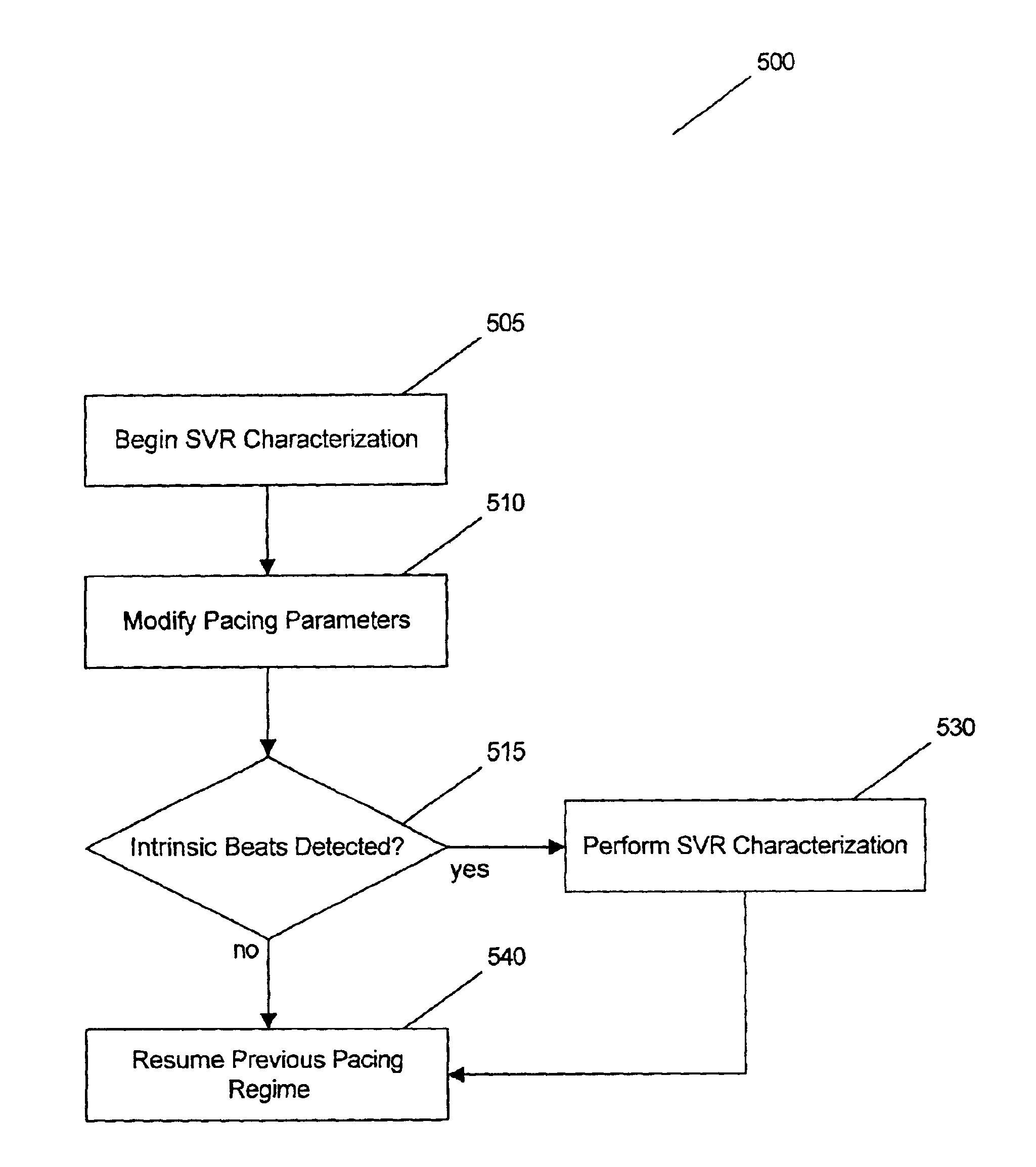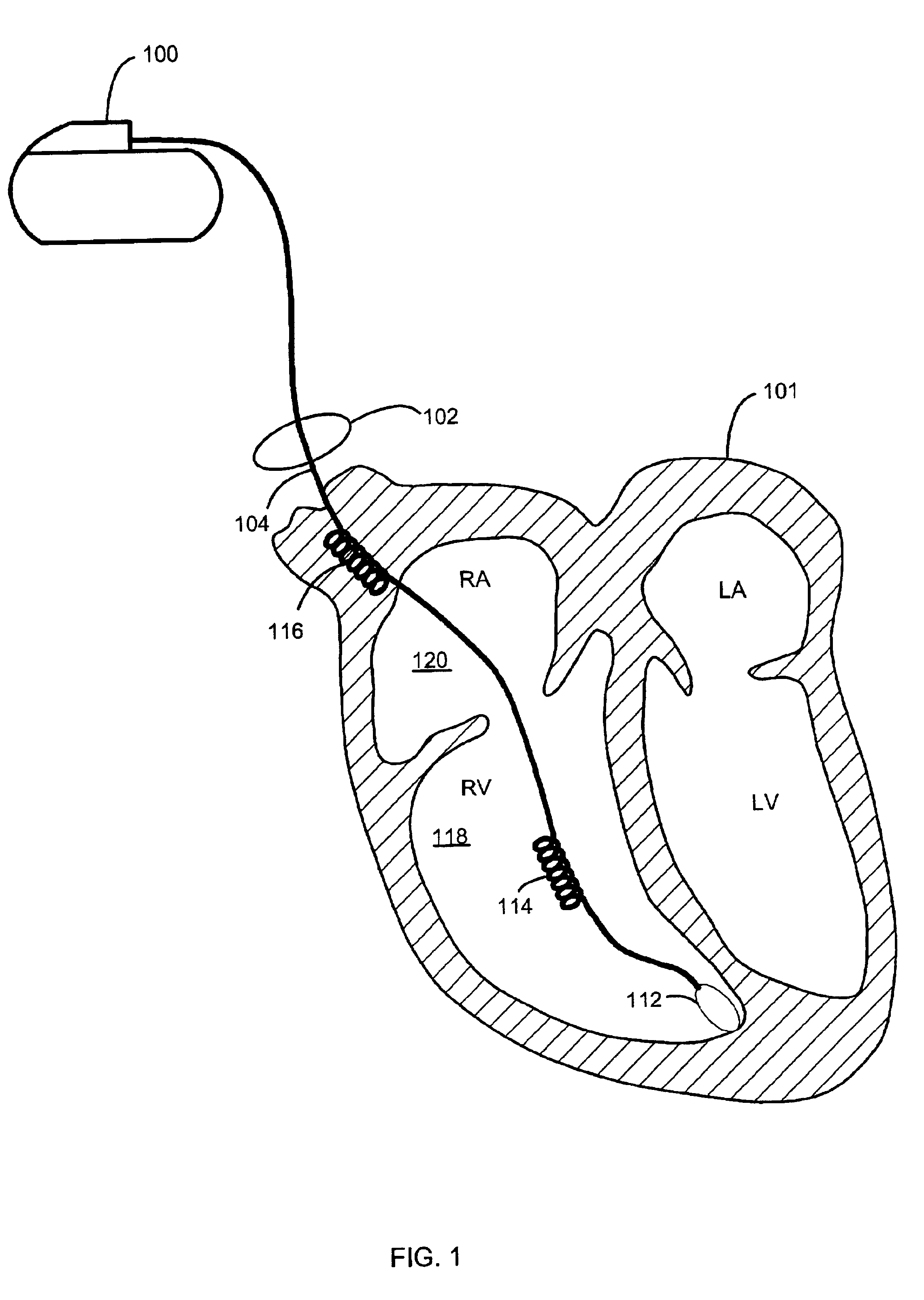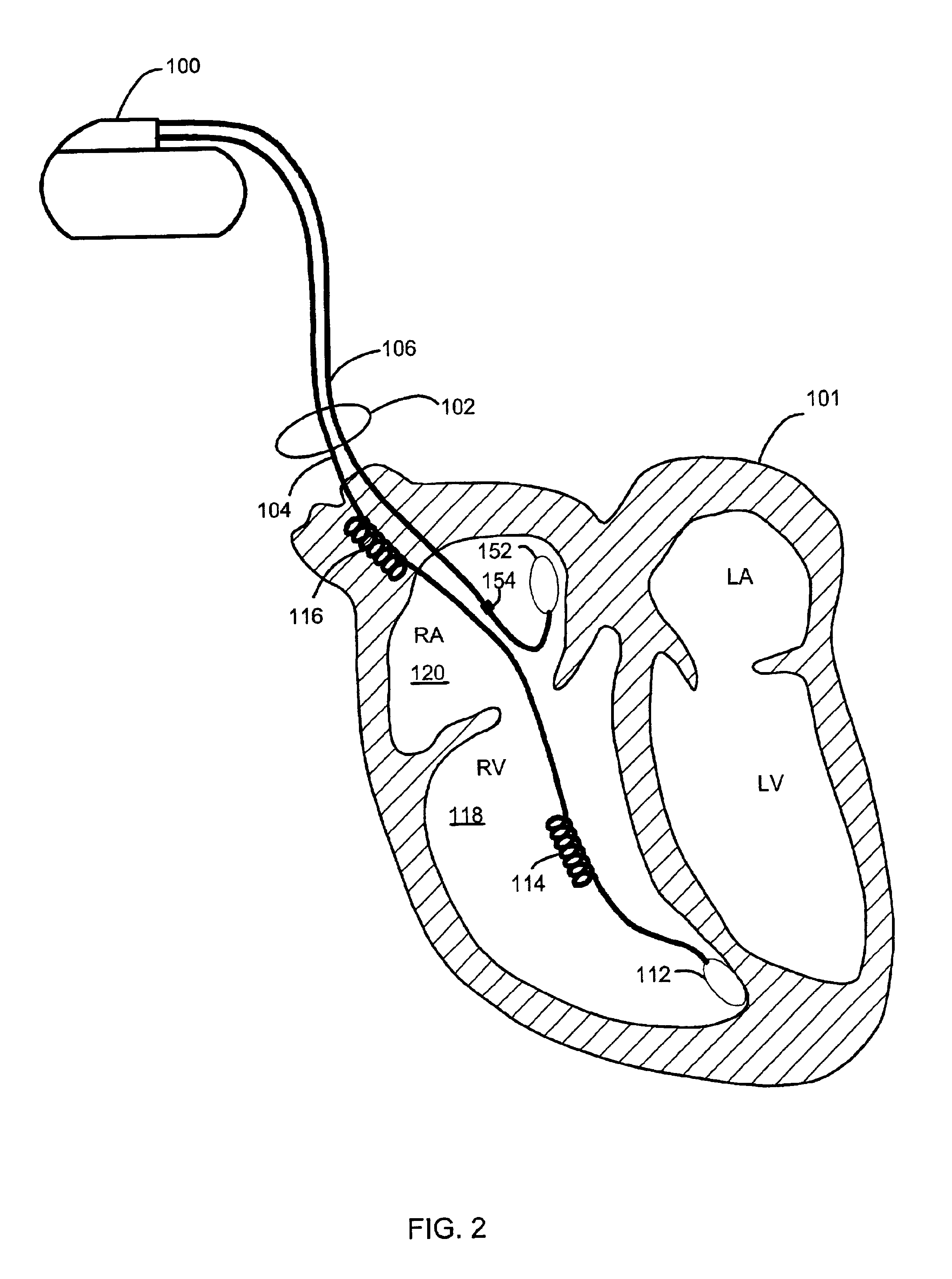Method and system for characterizing supraventricular rhythm during cardiac pacing
a supraventricular rhythm and cardiac pacing technology, applied in the field of implantable medical devices, can solve the problems of bradycardia producing a heart rate that is too slow to maintain adequate circulation, cardiac arrhythmia impairing cardiac efficiency, and potential life-threatening events
- Summary
- Abstract
- Description
- Claims
- Application Information
AI Technical Summary
Benefits of technology
Problems solved by technology
Method used
Image
Examples
Embodiment Construction
[0035]In the following description of the illustrated embodiments, references are made to the accompanying drawings which form a part hereof, and in which is shown by way of illustration, various embodiments in which the invention may be practiced. It is to be understood that other embodiments may be utilized, and structural and functional changes may be made without departing from the scope of the present invention.
[0036]A proper characterization of a patient's supraventricular conducted rhythm (SVR) requires detection of unpaced or intrinsic heartbeats. Although various methods have been proposed for characterizing a patient's SVR, these characterization methods are often dependent upon acquiring a sufficient number of intrinsic beats. One such method is described in commonly owned U.S. patent application Ser. No. 09 / 845,987, filed Apr. 30, 2001, now U.S. Pat. No. 6,708,058, and entitled “Normal Cardiac Rhythm Template Generation System and Method,” which is hereby incorporated he...
PUM
 Login to View More
Login to View More Abstract
Description
Claims
Application Information
 Login to View More
Login to View More - R&D
- Intellectual Property
- Life Sciences
- Materials
- Tech Scout
- Unparalleled Data Quality
- Higher Quality Content
- 60% Fewer Hallucinations
Browse by: Latest US Patents, China's latest patents, Technical Efficacy Thesaurus, Application Domain, Technology Topic, Popular Technical Reports.
© 2025 PatSnap. All rights reserved.Legal|Privacy policy|Modern Slavery Act Transparency Statement|Sitemap|About US| Contact US: help@patsnap.com



